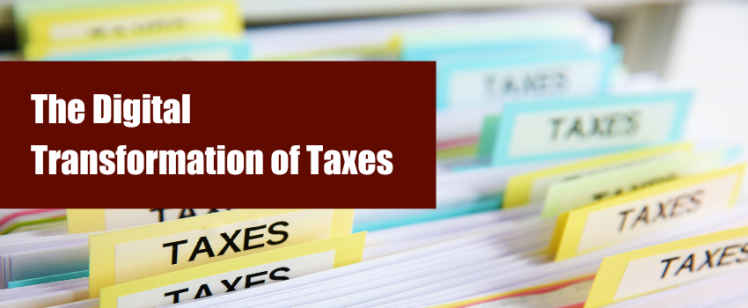-
The Digital Transformation of Taxes: Making Filing, Compliance, and Audits Easier Than Ever
Tax season has traditionally been a stressful time for many Americans, involving stacks of paperwork, confusing forms, and difficult-to-understand terminology. Tax authorities have also historically struggled with overseeing and ensuring taxpayer compliance. However, thanks to the digital revolution, tax digitalization is now transforming the way we handle the tax return and compliance process.
Simplified Tax Filing
The days of wrestling with mountains of forms and deciphering complex tax jargon are long gone! The digitalization of tax systems has introduced user-friendly online platforms that simplify the process of tax filing. These platforms guide taxpayers through a step-by-step process, prompting them to enter the necessary information and calculate their tax obligations accurately. With the help of built-in error checks and real-time calculations, the risk of making mistakes is significantly reduced. These platforms also enable taxpayers to file their returns conveniently from the comfort of their homes or offices, and they are accessible via computers, tablets, and smartphones, allowing individuals to file their taxes using a device of their choice. Additionally, online platforms often offer built-in customer support, ensuring taxpayers can receive assistance whenever needed.
Automation: Saving Time and Effort
Technology has played a vital role in automating various aspects of tax administration. Many tax systems use automation to streamline repetitive tasks, such as data entry and calculations. For example, automated systems can directly import financial data from various sources, such as employers, banks, and investment platforms, eliminating the need for manual data entry. This saves time and effort (and possibly cost for those who outsource tax preparation) and reduces the chances of human error.
Enhanced Compliance
With the implementation of digital tax systems, along with a more simplified process for taxpayers, compliance oversight by IRS and state tax departments has also become more efficient and effective. Tax authorities can use sophisticated algorithms and data analytics to detect potential non-compliance patterns and anomalies. This allows them to identify taxpayers who may have made errors or intentionally evaded taxes. By leveraging technology, tax authorities can ensure that everyone contributes their fair share and maintain a level playing field.
Digital Audits: A Streamlined Process
Digitalization has also revolutionized the audit process, making it less invasive and time-consuming. In the past, audits often involved extensive document gathering and in-person meetings. However, digital systems now allow taxpayers to submit supporting documents electronically, reducing the need for physical paperwork, and tax authorities can conduct virtual audits so that taxpayers do not need to be present in person. This streamlines the process, saves time, and reduces the burden on both taxpayers and auditors.
Tax digitalization in the United States has revolutionized the way we approach taxes, bringing convenience, efficiency, and accuracy to the forefront. Embracing the digital transformation of taxes allows individuals and businesses to save time, reduce errors, and contribute to a fairer and more transparent tax system.
- (609) 759-5881
- Contact us
